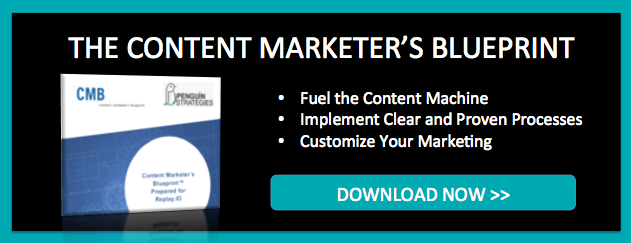
Content marketing is king…we get it. If I hear it again, I’ll probably have to…but I digress. The point is content marketing isn’t really an option anymore. Your business won’t get online recognition if you aren’t constantly creating and sharing valuable and original content. So what’s the catch?
Content Marketing is Expensive
There’s no two ways about it – producing all that wonderful original content is going to cost some serious dough (not just in money, but resources as well) and you’re going to have trouble getting the guy that signs the checks to agree. Fortunately, there are ways to outline your ROI and prove to the board that content is a worthwhile investment.
Understand Where the Money Goes
Take a moment to think about the actual costs that go into a content marketing plan. Assuming you don’t have all the writing capabilities in house, you’ll need to shell out for:
- A dedicated content editor
- Freelance writers and designers
- Associated technology expenses
So how does that look for a large B2B technology company that’s grossing around 10M a year? Let’s say this company is producing 2 blogs a week and one whitepaper a month. I’ll also add social media to this, as a blog is only as good as the people it reaches. So we’re looking at:
| Monthly Costs | |
| Personnel | |
| Managing Editor | $7,000 |
| Content | |
| Blog post costs | $1,600 |
| Premium content costs | $2,000 |
| Technology | |
| CMS & Hosting | $1,000 |
| Social automation | $250 |
| Total Expenses | $11,850 |
Admittedly, it’s a hefty price. But now let’s take a look at the return on investment. In an eBook published by KaPost an Eloqua, they broke down the costs benefits of content marketing for mid-sized and large companies. When they broke down the cost per lead, content marketing costs were anywhere between 31-41% lower than paid search investments.
Proving the ROI of your content marketing efforts is wholly dependent on understanding which leads came from your efforts and the path they took to becoming a revenue source.
- Did a lead come from an inbound link?
- Did they click on a call to action in your blog?
- How many times did they fill out a form on your site?
- Which forms did they fill out?
- Did they look at top of the funnel content or bottom?
- Did they share your content on social media?
- Did they click on a link in an email?
There are a lot of questions that you’ll need to answer if you’re going to understand where your leads are coming from and what channels are the most effective for sharing your content. Knowing where leads are coming from will not only tell you how much you spent in order to get that lead but will also inform future marketing activities.

by The Penguin Team on January 01, 2015
As a leading B2B digital marketing agency, We help B2B Technology Companies, enterprise software, and hardware companies increase brand awareness, reach more qualified leads and close more customers. Penguin Strategies is a Diamond Partner of HubSpot.







